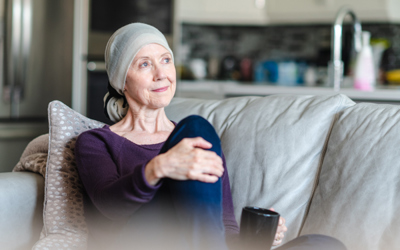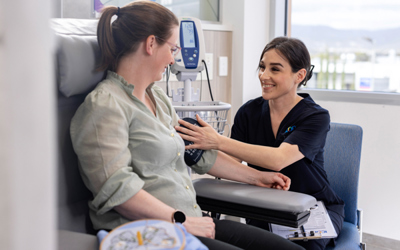Quick facts about pancreatic cancer
Pancreatic cancer is the 10th most common cancer with over 10,000 people diagnosed with pancreatic cancer in the UK every year.
Types of pancreatic cancer
There are two types of pancreatic cancers:
-
Exocrine tumours
These are cancerous tumours that form in the pancreas’s exocrine cells, which make the pancreatic enzymes needed to break down and digest food. Exocrine tumours contribute to 95% of all pancreatic cancers.
Adenocarcinoma – The most common type of exocrine tumour, this type of pancreatic cancer starts in the pancreas’ duct lining. Adenocarcinoma can also begin in the cells that make pancreatic enzymes.
-
Pancreatic neuroendocrine tumours (NETs)
These cancerous cells emerge from the pancreas’ endocrine cells. Endocrine cells are responsible for releasing hormones like insulin and glucagon into the blood stream to regulate blood sugar, stomach acid and food absorption. NETs can be functional (produce hormones) or non-functional (not produce hormones), with most being non-functioning.
Signs and symptoms of pancreatic cancer
Early-stage pancreatic cancer is unlikely to cause any signs or symptoms. This often means pancreatic cancer is diagnosed after it has spread to other parts of the body. Discussing anything concerning with your doctor as soon as possible can help give you peace of mind and offer the best chance of successful treatment if you receive a pancreatic cancer diagnosis.
Symptoms may include:

Jaundice – yellowing of the skin and eyes, dark urine, pale bowel motions and itchy skin

Unexplained weight loss

Recent onset diabetes, high amounts of sugar in the blood or reduced blood sugar

Appetite loss

Nausea or vomiting

Pain in the back, abdomen or side

Changes in stool, such as diarrhoea or paler stools

Reflux

Unexplained fatigue
Stages of pancreatic cancer
The TNM system is used to stage pancreatic cancer, and it helps doctors understand what your cancer looks like. The TNM stands for:
Tumour – the size of the tumour
Node – if the cancer has involved any lymph nodes
Metastasis – whether the cancer has metastasised (spread) to other areas of the body
The TNM information, along with other tests, helps determine the stage of your pancreatic cancer using the guidelines below:
-
Stage I
The cancer is in its earliest stage and is contained within the pancreas. The tumour is 4 cm or less in size.
-
Stage II
The cancer may be bigger than 4 cm in size and has spread into the duodenum, common bile duct and/or no more than three nearby lymph nodes.
-
Stage III
The cancer has spread outside of the pancreas into nearby blood vessels, organs and/or four or more lymph nodes.
-
Stage IV
The cancer has spread to distant organs and can be of any size.
Treatment for pancreatic cancer
There are many different types of treatment for pancreatic cancer. Your treatment will depend on you and your cancer.




